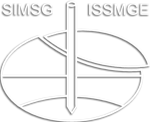Analysis of permeability variation and biofilm growth in non-woven geotextiles filter barriers in contact with wastewater
Analysis of permeability variation and biofilm growth in non-woven geotextiles filter barriers in contact with wastewater
The clogging of non-woven geotextiles by microorganism (biologging) is a barrier to water flow in works within those materials. However, the biofilm can be positive during the time when clogging does not occur, as it allows the development of microorganisms which can remove various pollutants from wastewater (e.g. suspended solids, organic compounds, nitrogen, and phosphorus). The evaluation of the permeability variation of non-woven geotextiles in contact with wastewater was determined experimentally in four permeameters with static load. The experimental units were operated by cycles of 20, 40, 60 and 80 days, with the permeability measurement being carried out at the end of each cycle. At the end of each test, geotextile samples were taken for analysis of the growth and physical-chemical composition of the biofilm by scanning electron microscopy (SEM) coupled with energy dispersive X-ray spectroscopy (EDS). The results show that no bioclogging was observed in the geotextile matrix over a period of 80 days, although biofilm clusters were observed after 20 days of operation. Aerobic conditions were observed inside the permeameters throughout the period of operation, assuming that phosphorus was retained by adsorption and that oxidation of organic matter and ammonia occurred.
M. Vitoria Morais; L. Marchiori; A. Albuquerque; Victor Cavaleiro
9th International Congress on Environmental Geotechnics (ICEG2023)
Biogeotechnics and Bioremediation
https://doi.org/10.53243/ICEG2023-152
